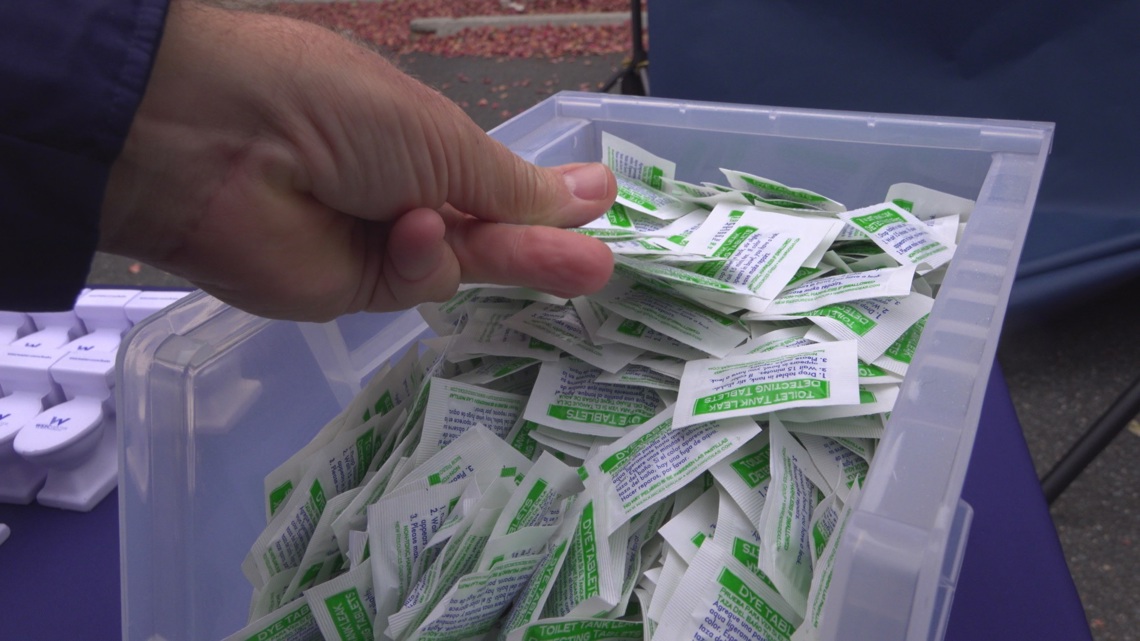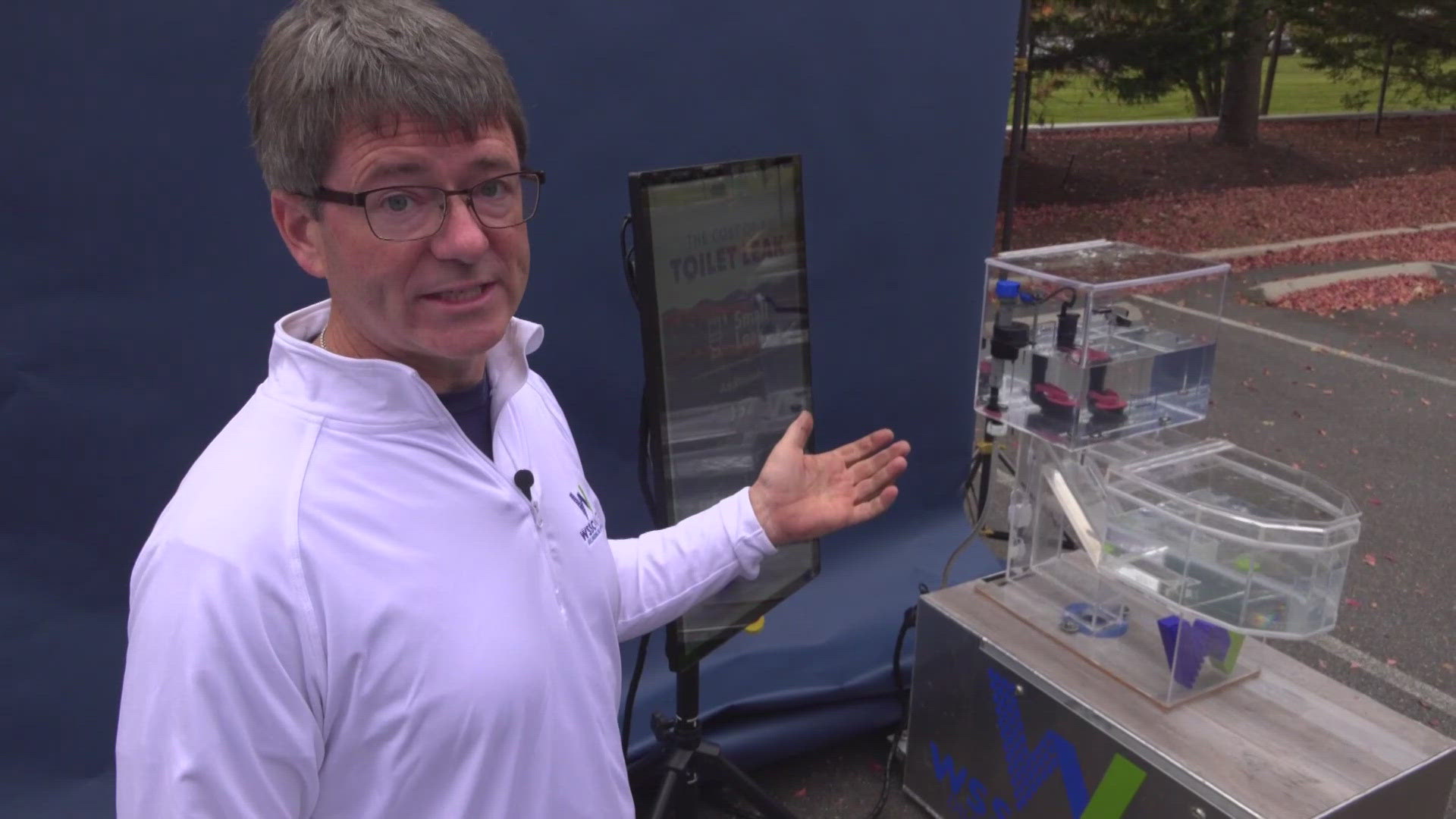LAUREL, Md. — As drought conditions persist in the D.C. region, focus has intensified on overlooked leaks in large municipal water systems.
One of the biggest culprits? Your toilet.
“Leaking toilets are by far the number one cause of wasted water and astronomical water bills,” said James Haldeman, an engineer with WSSC Water.
At their headquarters in Laurel, WSSC Water is using creative methods to grab attention, including a giant inflatable toilet and a unique plexiglass demonstration toilet to show how small leaks can lead to big bills.
“Right now, the toilet is set up to simulate a small leak,” Haldeman explained, pointing to a cracked flapper—the rubber seal that controls water flow from the tank to the bowl. “Even a small crack in the flapper can lead to a leak of 141 gallons a day, adding $73 to your monthly bill or $220 to a quarterly bill."
But that’s just the beginning. Larger leaks can waste a staggering amount of water. In one demonstration, a leaky valve caused a water bill to skyrocket to $7,322 over three months, wasting over 250,000 gallons.
From a conservation perspective, Haldeman emphasized the broader impact.
“We spend a lot of time purifying water, and if it’s not used for its intended purpose, it’s just water down the drain," he said.
As the region faces drought conditions, every drop matters, Haldeman added.
WSSC Water is urging residents to take action. One simple solution is dye test kits, which can be purchased at hardware stores, or WSSC Water also hands them out for free. Drop the dye in your toilet tank, and if the bowl water changes color, you have a leak. WSSC Water recommends performing this test whenever you change your clocks or check your smoke detectors.
As part of "World Toilet Day" on Tuesday, WSSC Water encouraged everyone to diagnose and fix leaks to conserve water and reduce bills.
For more tips and resources, visit WSSC Water’s website. You can also find helpful guides on fixing toilet leaks and water conservation.



